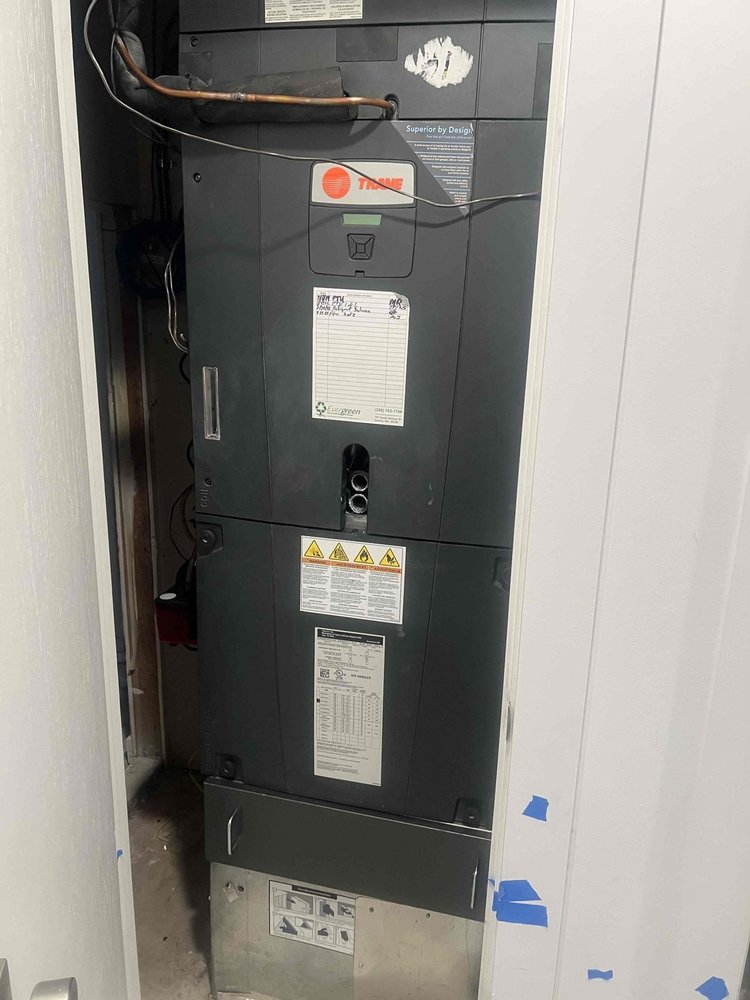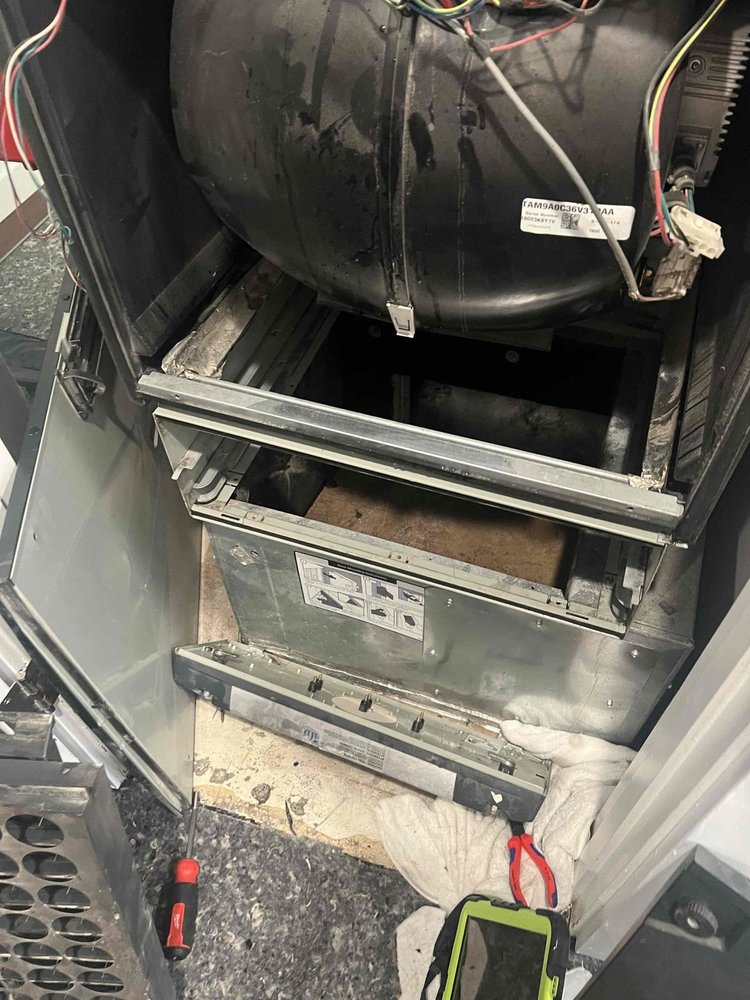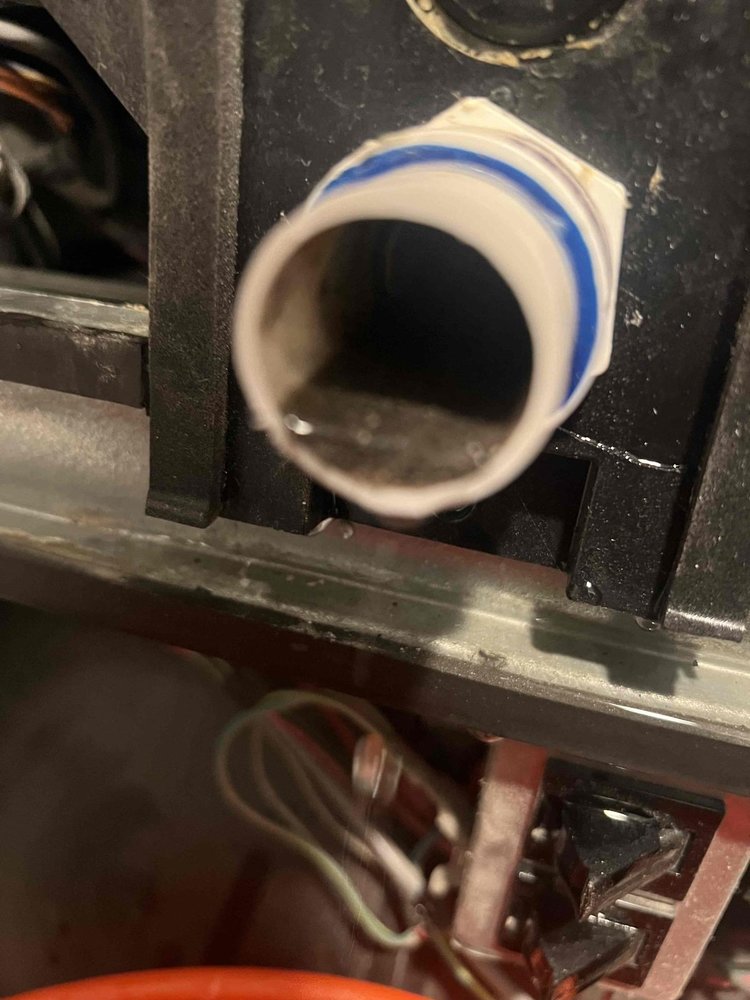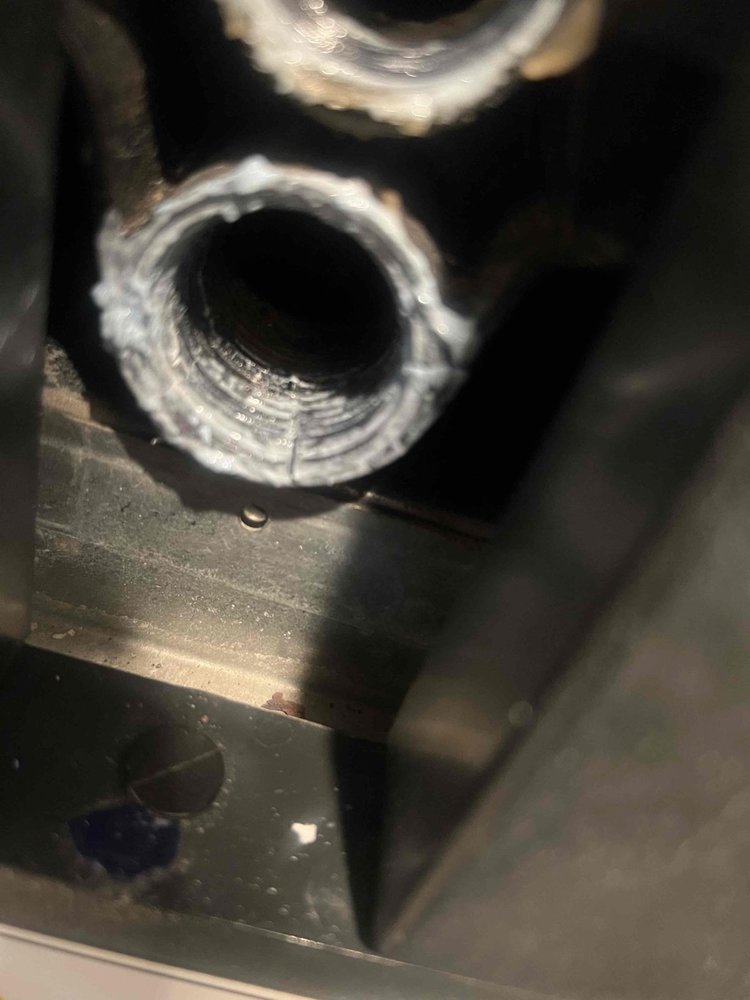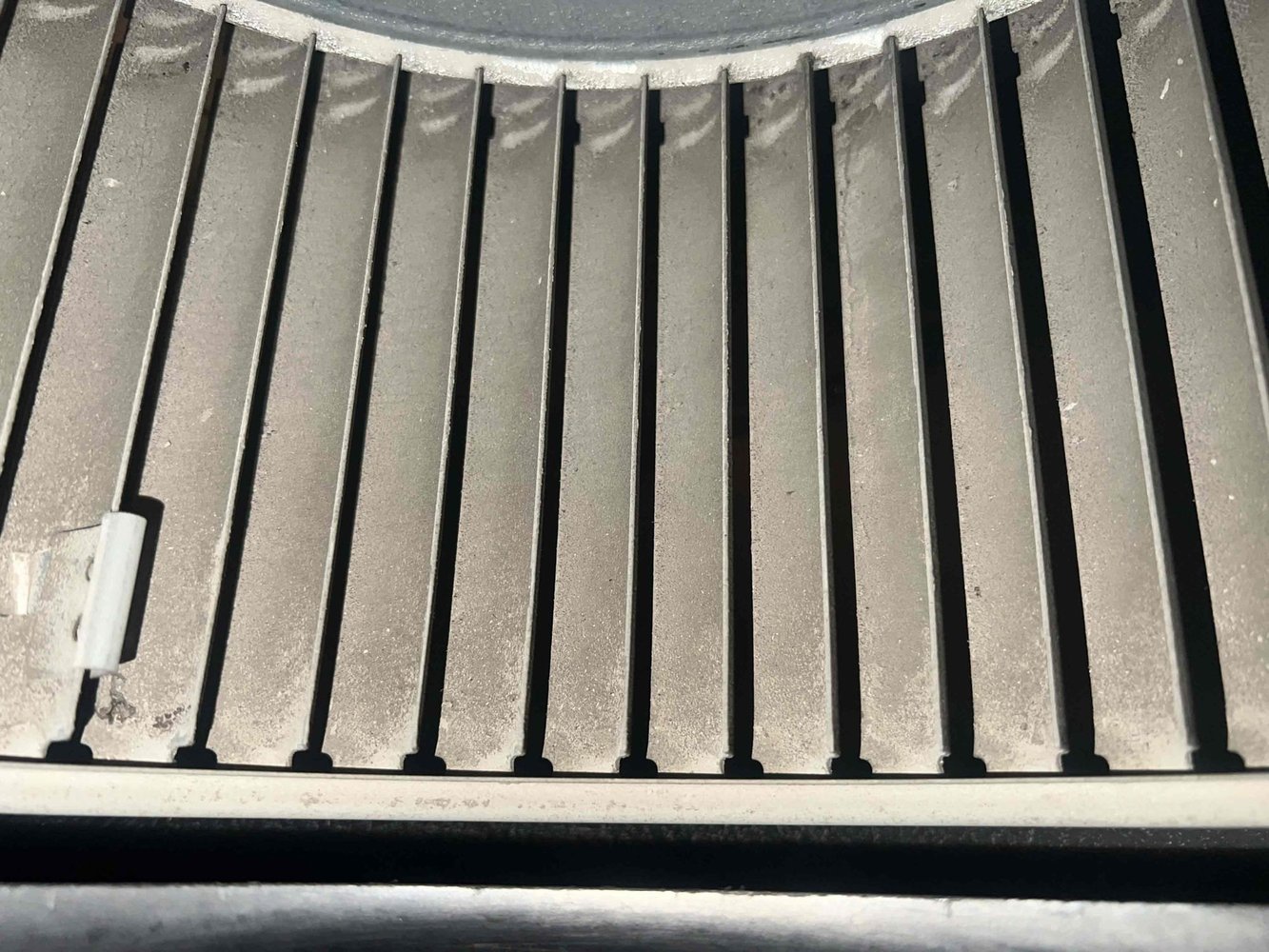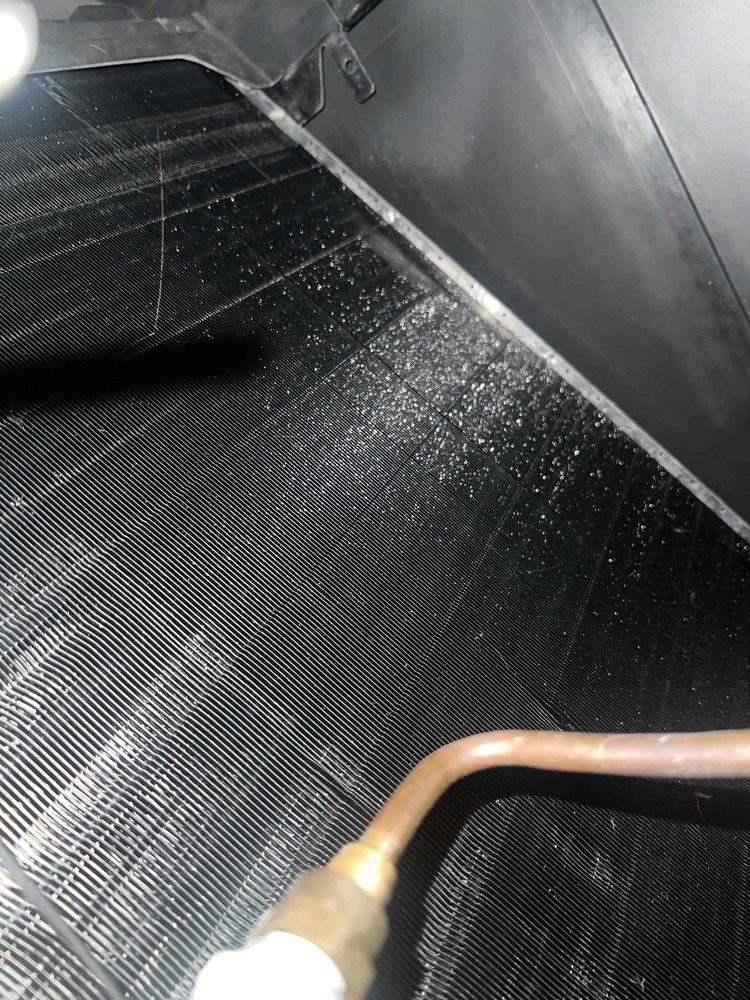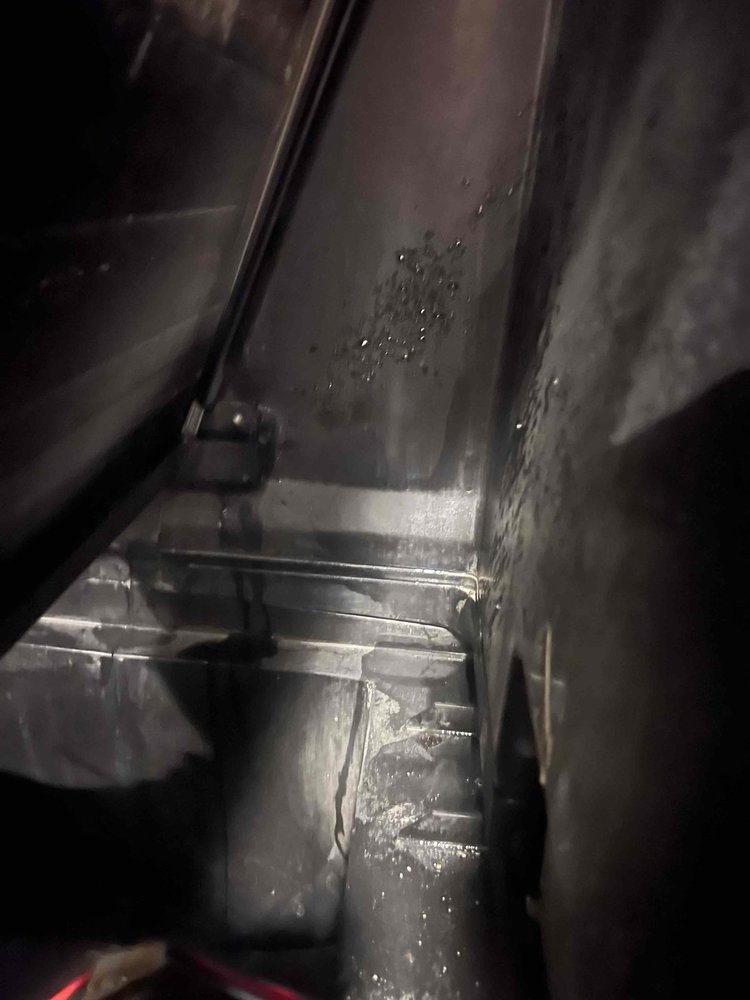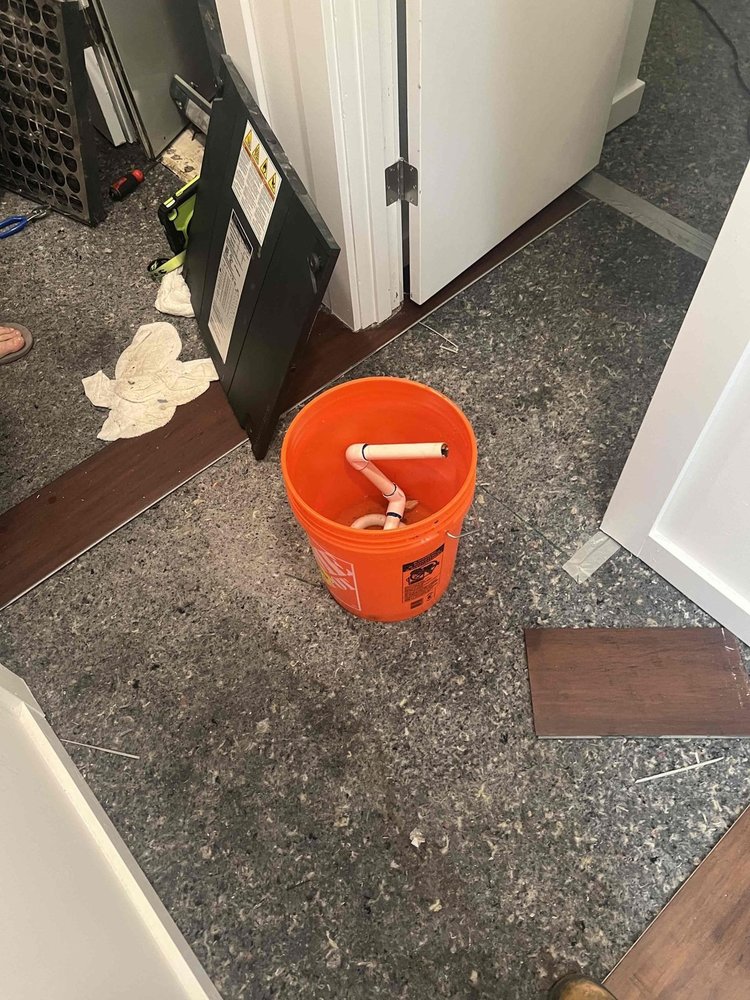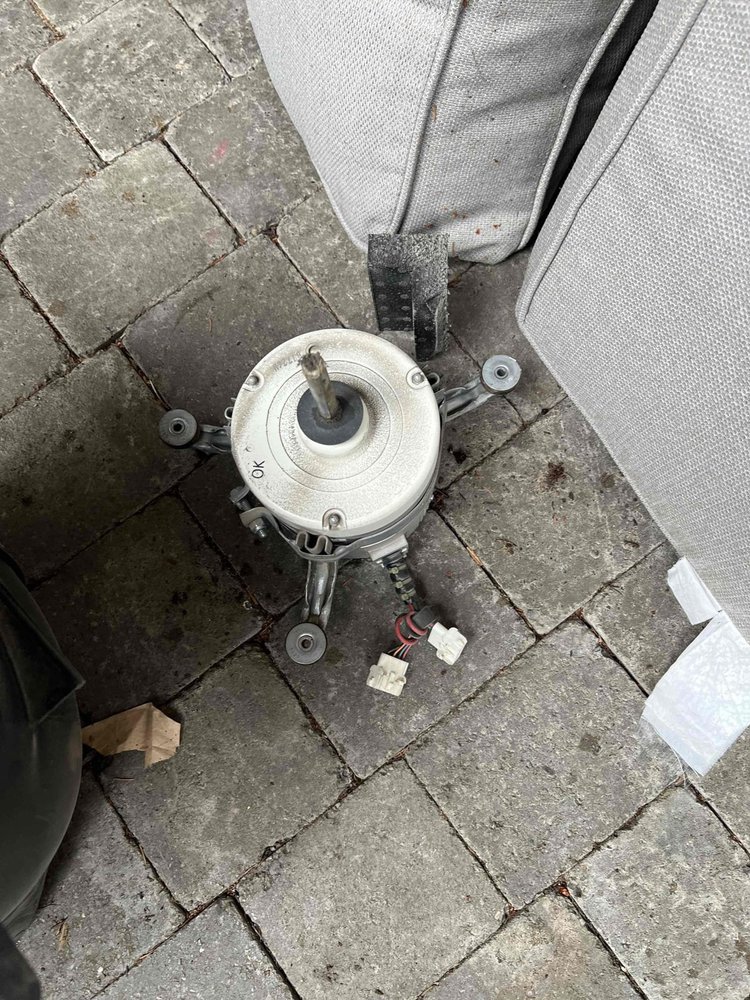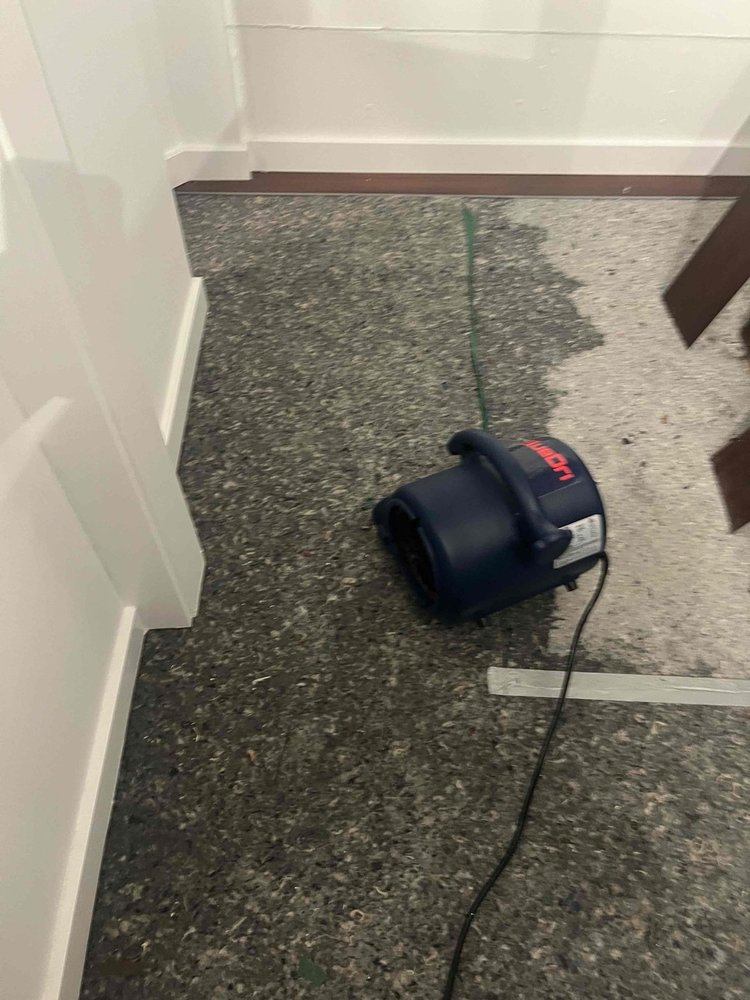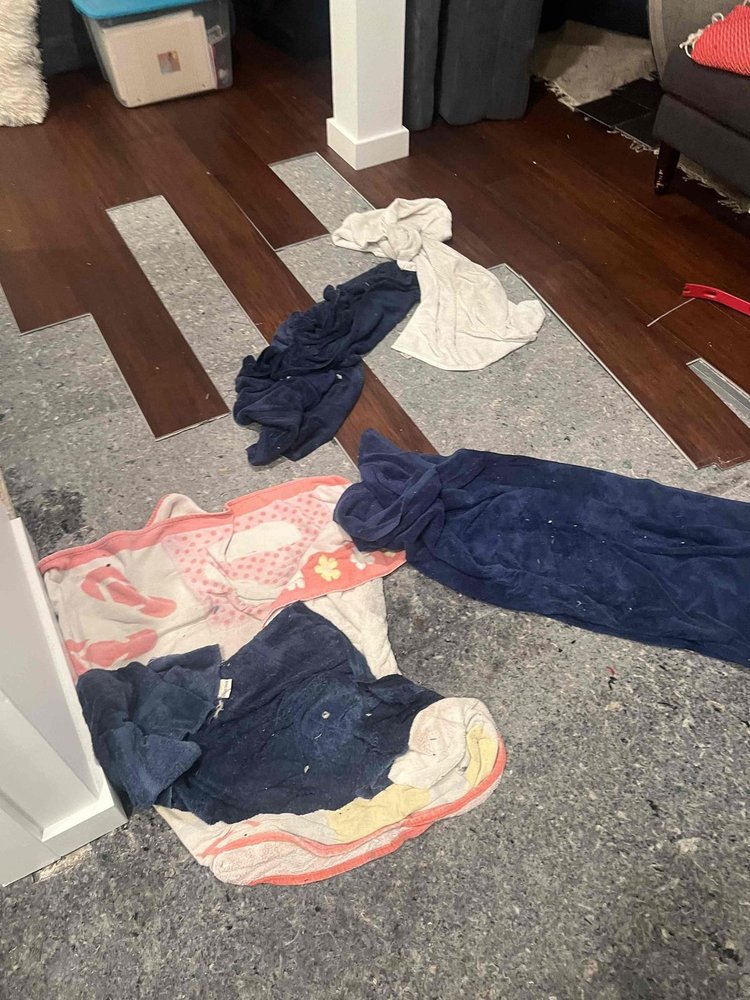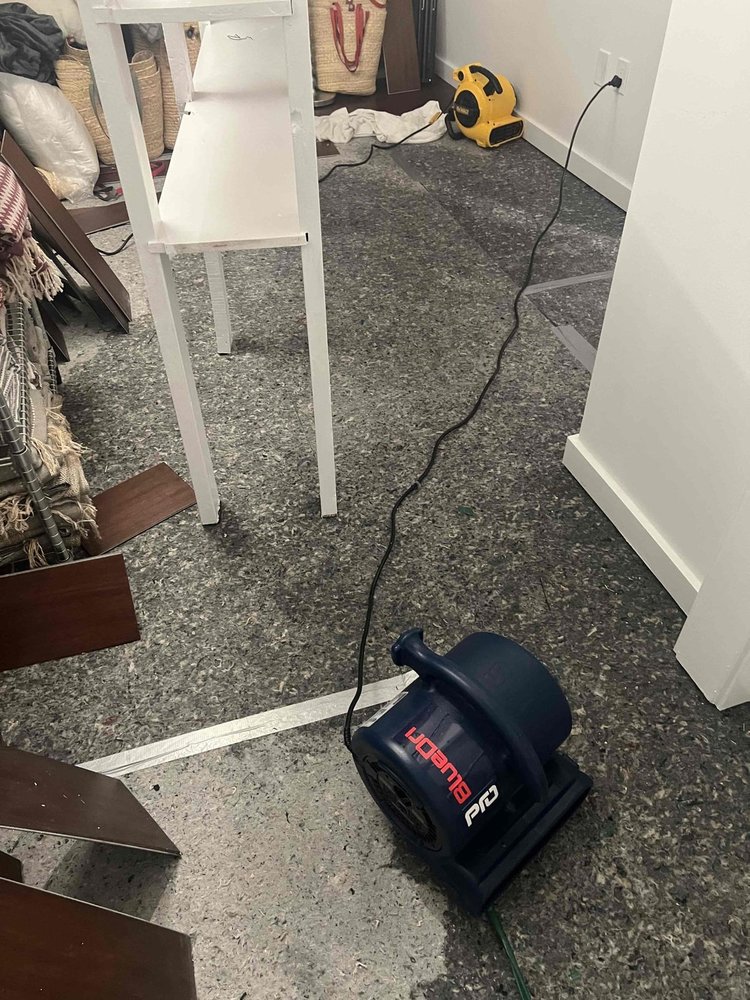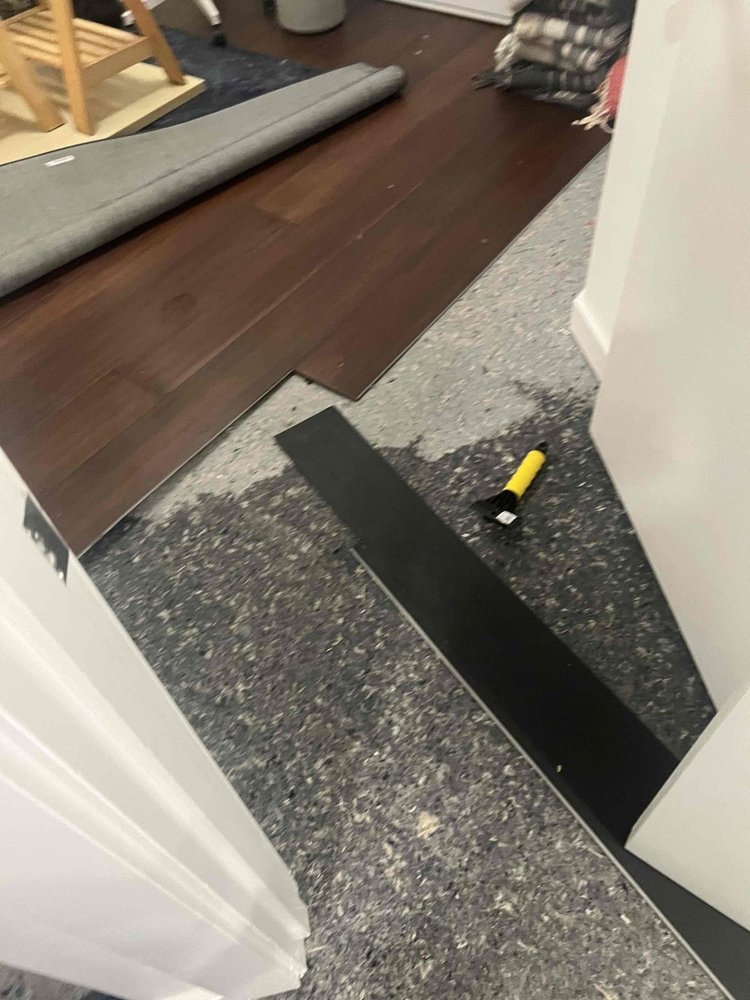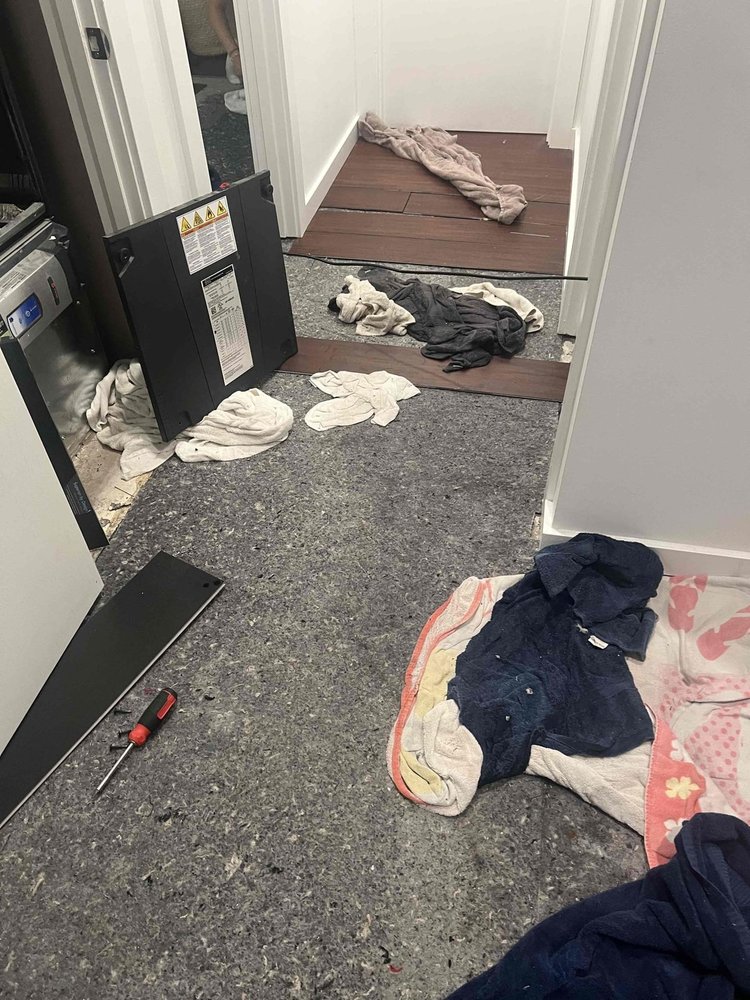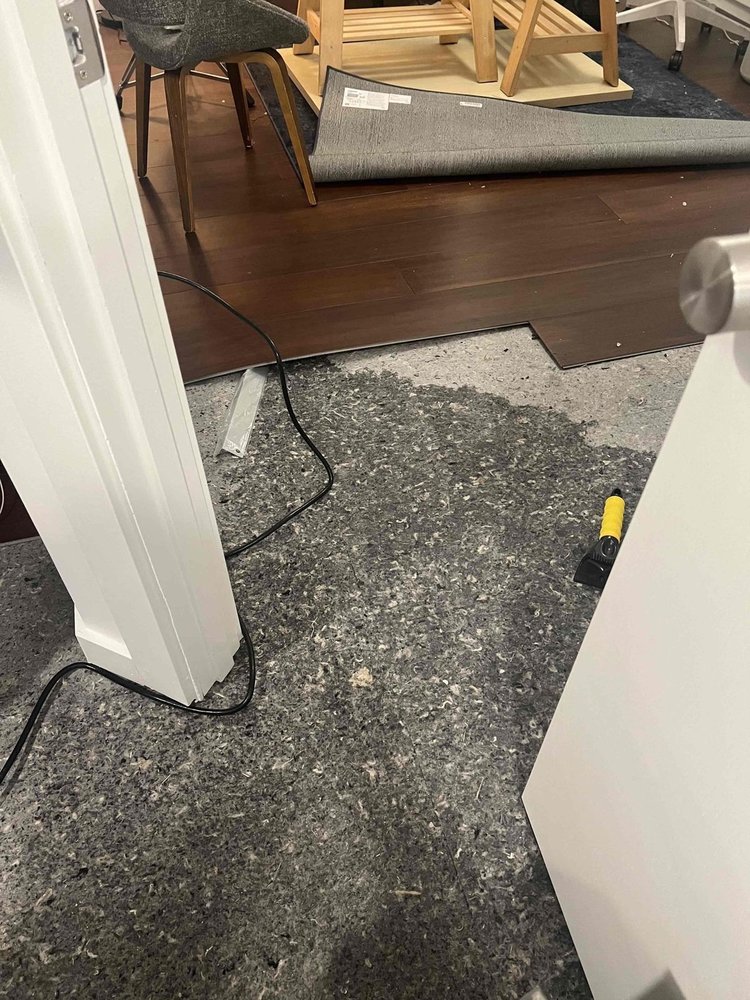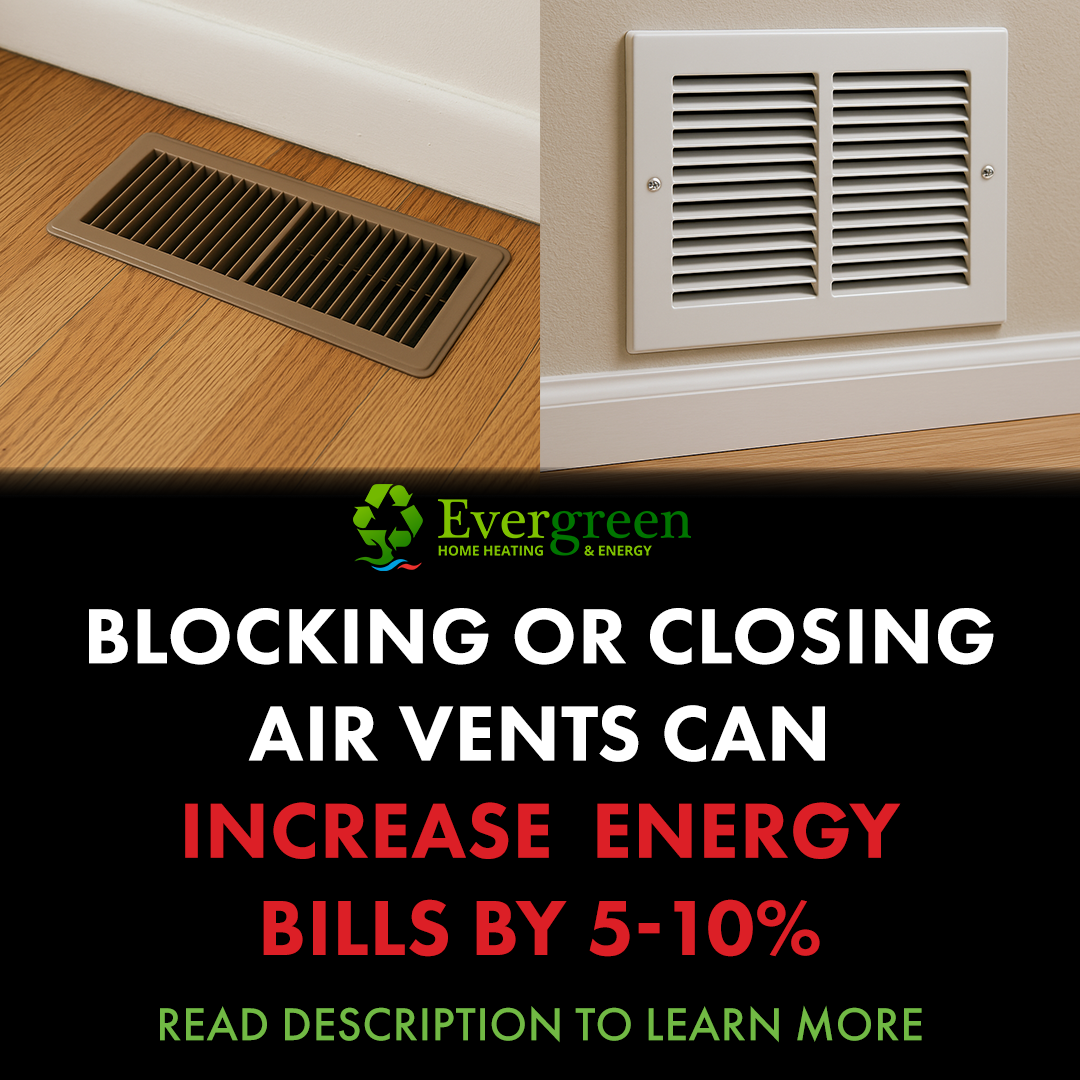A Real‑World Heat Pump Cautionary Tale: Why Maintenance Matters (and When a Deep Cleaning Is Urgent)

How a neglected drain path turned into a costly water event — and how to avoid it.
Based on a real service event. All details are anonymized and no personal identifiers are included.
(slide show at the end of article)
The short version
- A homeowner skipped regular cleanings. The indoor coil and drain path gummed up, and condensate overflowed inside the air handler.
- Floors had to be pulled up and fans brought in to dry the home.
- The HVAC repairs alone were nearly $4,800, and that’s before any reconstruction—costs that often push total losses into the tens of thousands once flooring, drywall, and paint are included.
What happened (no names, just the facts)
- 2019: Routine tune‑up; system operating normally. Then a multi‑year gap in service.
- Early 2022: Ice‑ups trigger diagnostics; equipment needs significant maintenance and a plan is set to get the system back on track.
- May 2023: Preventive maintenance finds the blower wheel partially dirty and recommends a pull‑and‑clean on the next visit—an early warning that debris is building up.
- January 2025: Maintenance again finds buildup and recommends a deep clean (with a duct clean beforehand). A written estimate is issued for the deeper work (~$513).
- August 2025: After‑hours water event. Technician documents a fault in the drain system caused by heavy debris buildup within the coil, blocking drainage and causing overflow. Mitigation includes deep coil cleaning, pull‑and‑clean blower, drain repairs/replacement, a new condensate pump, and adding an EZ‑Trap with overflow safety switch. Total HVAC repair ticket that night: $4,770.07.
What went wrong physically?
Heat pumps dehumidify in cooling mode. Moisture condenses on the indoor coil, drops into a drain pan, and exits through a trap or condensate pump. When dust and biofilm coat the coil face and clog the drain pathway, water clings and “bridges,” debris collects in the trap, and the pan finally overflows—into your home. That’s exactly what the diagnostic in this case described: heavy debris in the coil → blocked drain → overflow.
Why “standard maintenance” sometimes isn’t enough
Routine tune‑ups inspect, test, and clean accessible items. Once contamination has progressed, deeper procedures are needed:
- Pull & Clean Blower: Remove the assembly to clean the wheel and housing thoroughly. In this case, it was recommended in 2023 and quoted again in 2025.
- Evaporator Coil Deep Clean: Access both sides of the coil to break down biofilm and flush the pan and drain. This was performed after the overflow.
- Drain Rebuild & Trap Upgrade: Replace fouled runs and add a serviceable trap (e.g., EZ‑Trap) so clogs can be cleared quickly. An overflow safety switch can shut the system down before water spills.
Rule of thumb: If your technician recommends a deep cleaning, you’re already past routine maintenance—and the risk of water damage is rising.
What was spent vs. what a deep clean costs
- Emergency visit + cleanings + drain work + pump + safety switch: $4,770.07 (HVAC portion only).
- Quoted deep clean earlier in the year: $513.13 for a pull‑and‑clean of the blower.
Even without demolition, drying, and rebuild, the reactive bill was almost 10× the preventive estimate—and the property repairs are where losses often jump into five figures.
How to keep your heat pump (and home) safe
- Book maintenance twice a year. Heat pumps run year‑round; spring and fall service keeps both heating and cooling components clean.
- Say “yes” to deep‑clean recommendations. If a tech finds coil or blower buildup, act promptly. Waiting lets sludge harden and migrate to the drain, where overflows begin.
- Upgrade your condensate protection. Ask about a clean‑out trap and an overflow safety switch that shuts the system off before water spills.
- Use quality filtration. A well‑sealed 4" media filter and proper filter rack reduce dust loading on the blower and coil.
- Watch for early warning signs. Musty odors, reduced airflow, water in a secondary pan, or frequent drain clogs are red flags.
A simple homeowner checklist
- Replace or clean filters on schedule.
- Keep the area around the air handler clear and dry.
- Check the condensate line periodically for algae or slow flow.
- If your tech mentions “pull & clean,” “deep coil clean,” or “drain rebuild,” prioritize it.
- Confirm you have an overflow shutoff—especially if your air handler sits above finished spaces.
Final thought
This case shows how a small maintenance choice can snowball: a recommended deep cleaning (~$500) went undone, the drain plugged, and the resulting overflow triggered costly emergency work—plus home repairs. Regular maintenance and timely deep cleaning are the most economical insurance your heat pump has.
Contact Evergreen for service on your HVAC systems.
Schedule online at: Seattle Home Heating & Cooling Services- Heating & A/C
Call (206)565-1455

